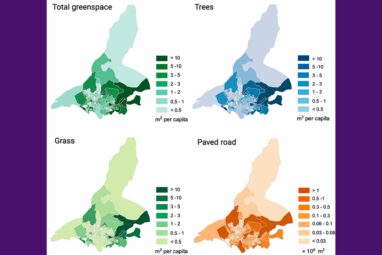Amazon Web Services (AWS) on Thursday announced Ocelot, its first-generation quantum computing chip, as it enters the race against fellow...
Biomass burning—whether from wildfires, wood stoves or agricultural fires—sends massive amounts of tiny particles and chemicals into the air. These...
A new study led by an international team, including researchers from The University of Western Australia, has discovered that a...
They may both be Olympic host cities, but Salt Lake City and Los Angeles, the major population hubs of their...
Microscopic plastic pollutants drifting through the air are lodging in the lungs of birds, a new University of Texas at...
A study of South Korean consumers shows spending increases as air pollution levels rise. The correlation is predominant among hedonic...
A research team led by Rumi Chunara—an NYU associate professor with appointments in both the Tandon School of Engineering and...
Tech giant Microsoft unveiled a new computer chip on Wednesday that it says could transform everything from fighting pollution to...
Someday, your drinking water could be completely free of toxic “forever chemicals.” These chemicals, called PFAS (per- and polyfluoroalkyl substances),...
Swimming robots play a crucial role in mapping pollution, studying aquatic ecosystems, and monitoring water quality in sensitive areas such...
A Curtin University-led paper, “The Use of Plastic as a Household Fuel among the Urban Poor in the Global South”...
Understanding the relationship between humans and the ocean is crucial for making informed and effective decisions that will shape the...













